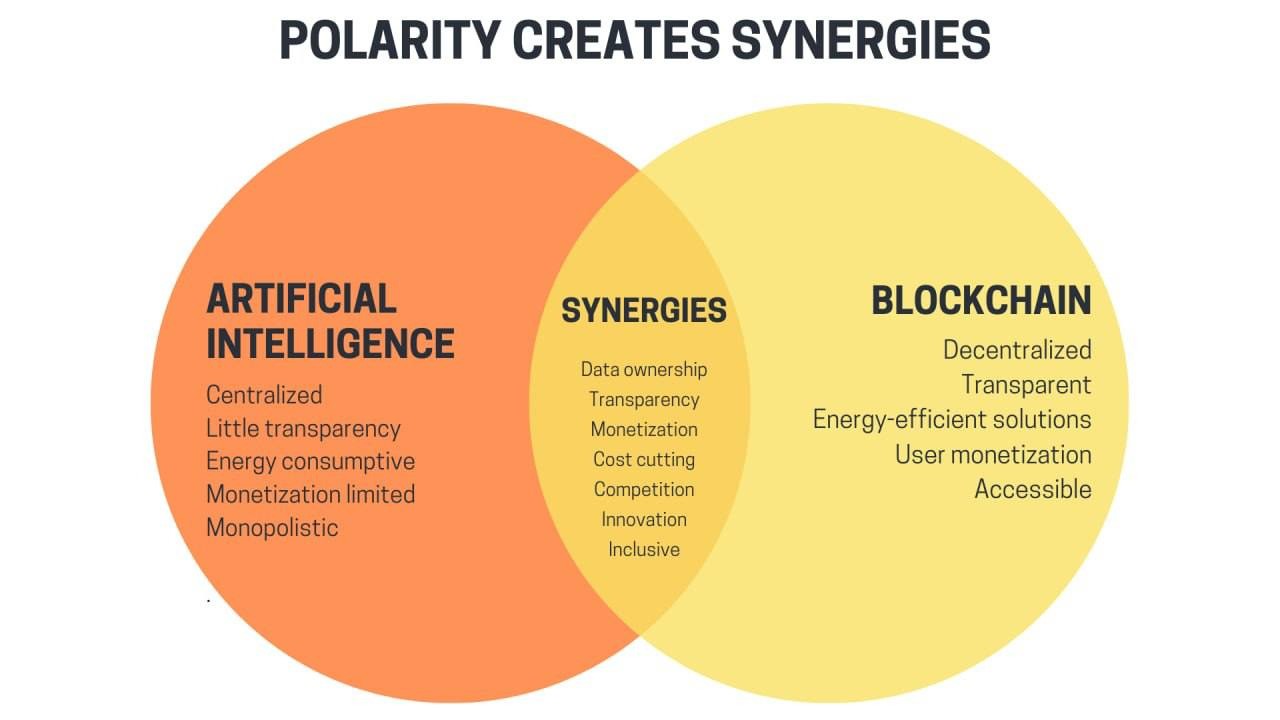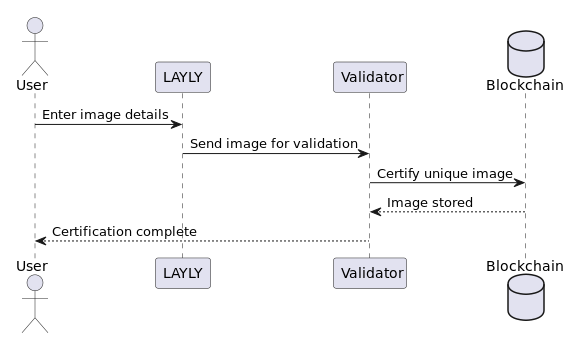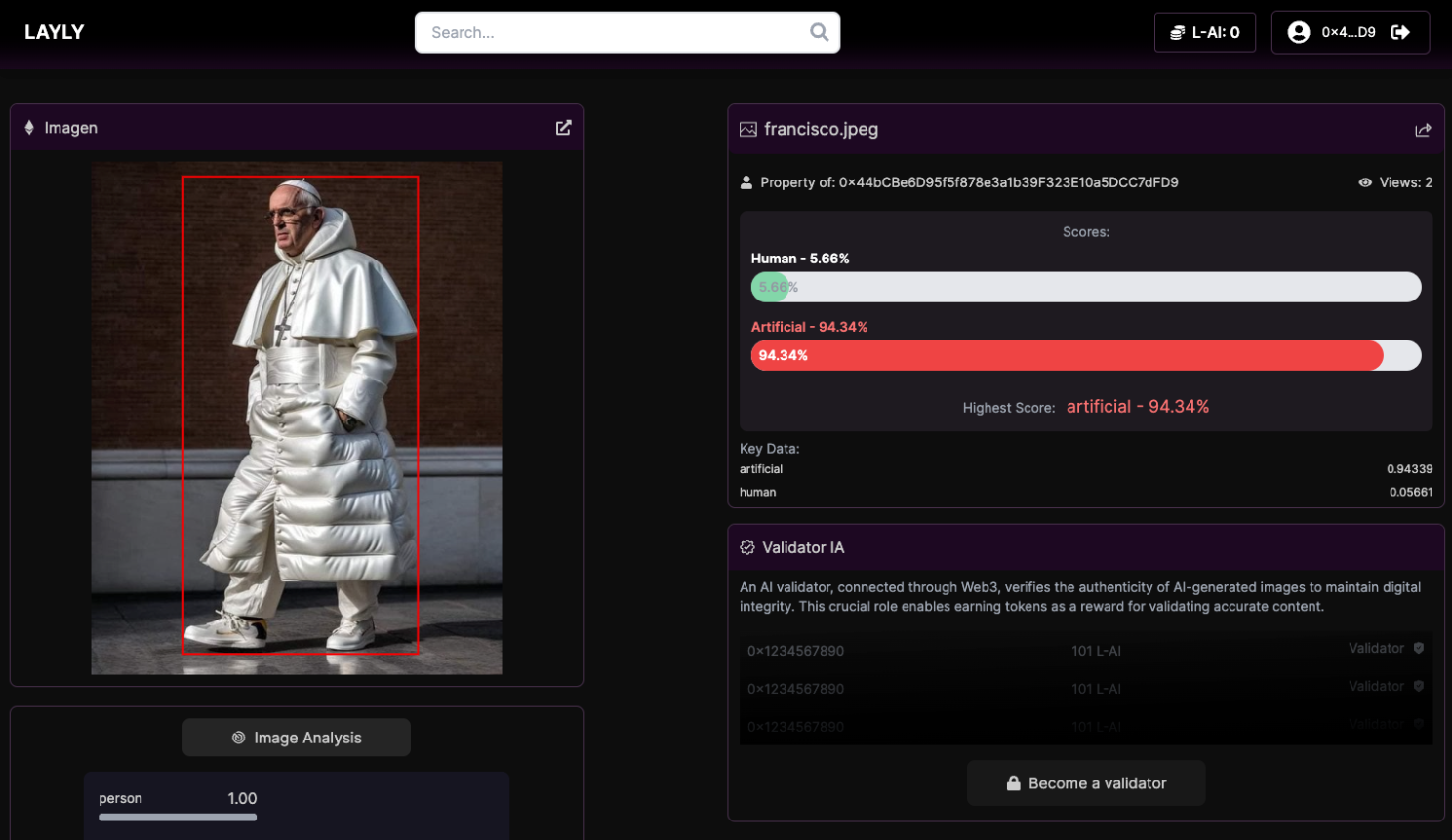Introduction to LAYLY
LAYLY is a web3 dApp blockchain-based platform that focuses on analyzing images to detect their authenticity. In its initial version 0.0.1, the platform will concentrate on image validation. In future versions, the functionality will be expanded to include validation of audio and video files.
Functionality
The dApp utilizes artificial intelligence to analyze images and classify them based on their authenticity. Additionally, a specific function will be implemented for image validators, who can contribute to the verification process.
Blockchain Integration
A key aspect of LAYLY is its integration with the Ethereum blockchain, where certificates of authenticity for validated images will be stored. This ensures transparency and immutability of the results, allowing users to reliably verify the authenticity of images.
The proliferation of images, videos, and audio generated by artificial intelligence, including voice cloning, poses an emerging risk due to the lack of adequate regulation. This advanced technology, capable of creating hyper-realistic content, blurs the lines between authenticity and artificiality, raising concerns about security, privacy, and information integrity. The absence of a robust regulatory framework to govern the use and distribution of these AI-generated contents exacerbates the potential for misuse, underscoring the urgency of establishing clear and effective guidelines to mitigate associated risks.

This solution, in its first version, focuses on analyzing images. It utilizes our advanced LLMS (Learning-based Media Synthesis) system, meticulously trained on Amazon SageMaker, to accurately discern whether an image is the result of Artificial Intelligence or the creative work of a human.
This project aims to validate the authenticity and origin of multimedia files, using advanced technology to discern whether they are genuine or generated by AI. It highlights its integration with blockchain, which enables registering each unique file on the chain, ensuring transparency and immutability. Thus, we provide a robust solution against fake content, preserving the integrity of digital content.

This project aims to validate the authenticity and origin of multimedia files, using advanced technology to discern whether they are genuine or generated by AI. It highlights its integration with blockchain, which enables registering each unique file on the chain, ensuring transparency and immutability. Thus, we provide a robust solution against fake content, preserving the integrity of digital content.

Roadmap
Stage 1: Image Validation (Version 0.0.1)
The first stage focuses on implementing the core functionality of image validation. Users will be able to upload images to the platform, and LAYLY AI algorithms will analyze and classify them as authentic or fake.
Additionally, basic features for image validators will be introduced, allowing them to review and verify image classifications provided by the AI.
Stage 2: Audio Validation (Version 0.1.0)
In the second stage, LAYLY will expand its functionality to include validation of audio files. Users will be able to upload audio recordings, which will undergo analysis to determine their authenticity.
Advanced features for validators will be implemented, allowing them to contribute to the audio validation process and earn rewards for their efforts.
Stage 3: Video Validation (Version 1.0.0)
The final stage will introduce validation of video files to LAYLY platform. Users will be able to upload videos for analysis, and the platform AI will assess their authenticity based on various factors.
Additionally, advanced features for validators will be further enhanced, providing them with tools to efficiently review and validate video content.
Stage 4: Image Validators (Version 1.5.0)
The image validators are users who certify the authenticity of the image. Our goal is to process a vast amount of multimedia files including images, audio, and videos through our artificial intelligence and have them validated by each user.
Image validators will have the opportunity to earn coins for each validated file.
We continue to enrich our project with new features and functionalities. Currently, as a decentralized application (dApp) based on Web3 technology, we are dedicated to expanding our range of services. In the short term, we have ambitious plans to integrate the ability to analyze not only images but also videos and audios. This development is aligned with our commitment to providing a comprehensive platform that addresses the current needs of authentication and validation of multimedia content in the digital ecosystem. Our team is working tirelessly to implement these improvements and ensure that our dApp remains at the forefront in providing innovative and reliable solutions in the realm of Web3 technology.